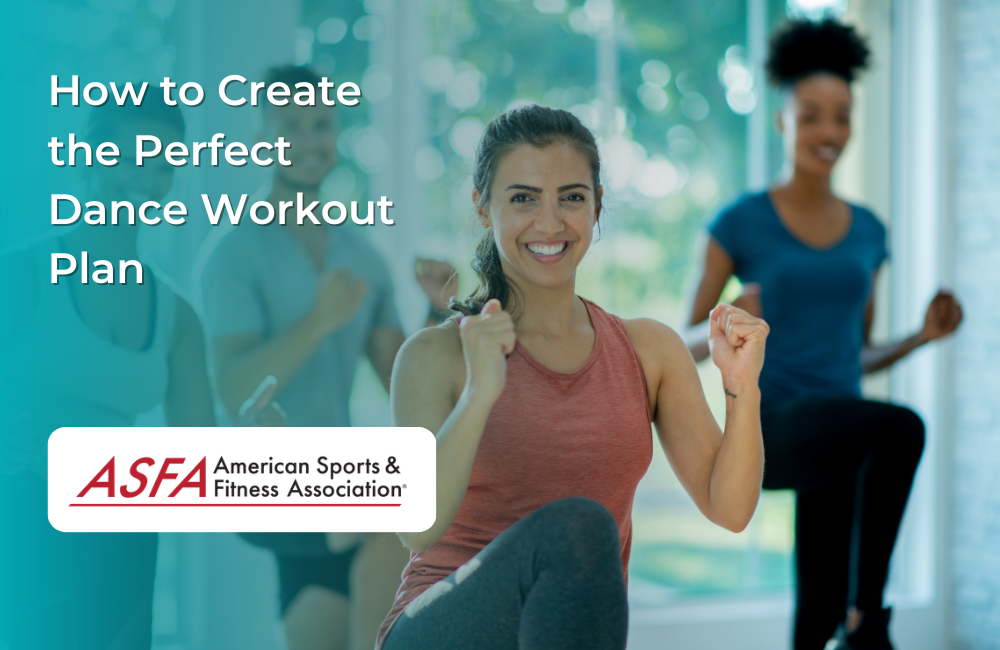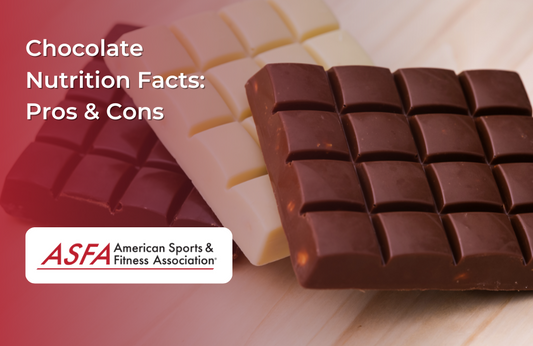Whether you’re an experienced dancer or just starting out, having a well-structured dancer's workout routine is essential to improving your performance, building strength, increasing flexibility, and enhancing stamina. Dance is an art form that requires agility, coordination, balance, and endurance. A dance workout plan tailored to your specific needs and goals can take your training to the next level by targeting all the key areas that improve your overall fitness and dance technique.
In this comprehensive guide, we will walk you through how to create the perfect dance workout plan that includes five crucial components: a cardio warm-up, isolation drills, strength training, conditioning, and a cool down. By integrating each of these elements into your regular routine, you can optimize your physical conditioning and see significant improvements in your dancing, all while reducing the risk of injury.
1) Understanding Your Goals and Needs
Creating the perfect dance workout plan starts with understanding your unique goals and needs. This foundational step ensures that your routine is tailored to enhance your performance, build strength, and prevent injuries.
Define Your Dance Style and Goals
Every dance style has its own set of physical demands, and recognizing these is crucial for crafting an effective workout plan. Whether you’re a ballet dancer needing a strong upper body and core, or a contemporary dancer focusing on flexibility and expression, your workout should reflect these requirements.
-
Identify Your Dance Style: Are you a ballet, contemporary, hip-hop, or jazz dancer? Each style emphasizes different aspects of fitness. For instance, ballet dancers often require a strong upper body and core for lifts and balance, while hip-hop dancers might focus more on agility and explosive power.
-
Set Specific Goals: What do you aim to achieve with your workout plan? Do you want to improve your technique, increase your flexibility, or enhance your overall performance? Setting clear, specific goals will help you stay focused and motivated.
Assess Your Current Fitness Level
Before diving into a new workout routine, it’s essential to assess your current fitness level. This helps in creating a plan that challenges you appropriately without risking injury.
-
Evaluate Your Strength: Can you perform exercises like push-ups and planks that target different muscle groups? Assessing your strength will help you understand which areas need more focus.
-
Assess Your Flexibility: Can you touch your toes, perform leg lifts, and move freely without restrictions? Flexibility is crucial for dancers, and knowing your current level will guide your stretching and mobility exercises.
-
Evaluate Your Endurance: Can you sustain long periods of physical activity without getting tired? Endurance is key for performing long routines, and understanding your stamina will help in planning your conditioning exercises.
By defining your dance style and goals and assessing your current fitness level, you lay the groundwork for a workout plan that is both effective and safe.
1) Cardio Warm-Up
A proper warm-up is the foundation of any successful workout plan. Warming up before dancing is critical for preventing injuries, enhancing flexibility, and increasing blood flow to your muscles. It primes your body for more intense movements by elevating your heart rate and preparing your joints for the range of motion required in dance. The goal of your warm-up is to raise your core temperature, loosen tight muscles, and mentally prepare you for your session. Returning to the starting position during warm-up exercises ensures proper form and helps in formulating effective workout cycles.
How to Structure Your Warm-Up:
-
Start with gentle cardio: Spend the first 5-10 minutes of your workout engaging in light cardio exercises such as jogging in place, skipping rope, or doing dynamic moves like jumping jacks or high knees. This will gradually increase your heart rate, lubricate your joints, and wake up your body’s muscles.
-
Incorporate dance-specific movements: After raising your heart rate, begin incorporating dance movements that mirror the actions you’ll be doing in your workout. For example, ballet dancers might include pliés and relevés in their warm-up, while hip-hop dancers can incorporate arm swings, shoulder pops, or body rolls. By mimicking the movements you’ll be performing in your dance routine, you are ensuring that your muscles are prepared for the workout to come.
-
Increase intensity progressively: As you advance through your warm-up, increase the intensity by adding movements that engage multiple muscle groups. Jumping rope, lateral movements like grapevines, or even mini plyometric exercises like squat jumps can further engage the lower body. If you’re planning to focus on jumps or leaps in your dance routine, including light plyometric exercises during the warm-up is essential.
A warm-up lasting 8-12 minutes is typically sufficient to get your body primed for more complex and intense movements. Be sure to listen to your body and adapt the warm-up as needed to match your dance style and the intensity of the session.
2) Isolation Drills
Isolation drills are a key part of any dance workout plan because they help improve body awareness and control, both of which are essential for any dancer. Isolations involve moving one part of your body independently of the rest, such as your shoulders, hips, or ribcage. These drills not only strengthen individual muscle groups but also help strengthen core muscles, which are essential for supporting the spine and pelvis, improving movements in different activities, and fostering better posture, balance, and coordination. Additionally, they improve your ability to articulate precise movements, which is critical in dance styles that emphasize fluidity, like contemporary and jazz.
Effective Isolation Drills to Include:
-
Hip Circles: These help develop hip mobility and control, which are crucial for styles like jazz, hip-hop, and Latin dance. To perform this drill, stand with your feet hip-width apart and move your hips in a circular motion, keeping the rest of your body still. Perform 15-20 circles in each direction to increase flexibility and control.
-
Shoulder Rolls and Isolations: Shoulder isolations help strengthen your upper body and improve your control over the shoulder joints, which are heavily used in dance styles like hip-hop and jazz. Perform forward and backward shoulder rolls, followed by side-to-side isolations. This helps with coordination and balance between your upper body and lower body movements.
-
Ribcage Isolations: Ribcage isolations are essential for creating fluidity in the torso. Practice moving your ribcage side to side, front to back, and in circular patterns while keeping the rest of your body stable. This isolation improves flexibility and articulation in the torso, key for contemporary and lyrical dance.
-
Neck and Head Isolations: Neck and head isolations can improve your coordination, fluidity, and posture in dance. Gently tilt your head side to side or make small circular movements, ensuring smooth, controlled motion. This helps relieve tension in the neck and enhances overall mobility.
For isolation drills, focus on 2-3 sets of 15-20 reps per isolation. Performing these drills consistently will improve your body control, articulation, and precision, which are essential for executing complex dance movements with finesse.
3) Strength Training
Strength training, especially exercises that utilize body weight, is a critical aspect of any dancer’s workout plan. Dance requires not only grace and flexibility but also strength, particularly in the core, legs, and upper body. Strong muscles help support the joints, reduce the risk of injury, and allow for more powerful and controlled movements. By incorporating strength training into your routine, you can improve your ability to perform jumps, lifts, turns, and balance with ease.
Key Body Weight Strength Training Exercises for Dancers:
A. Lower Body Strength:
-
Squats: Squats are essential for building power in the glutes, quads, and hamstrings, which are critical for jumps and floor work. They also improve hip and ankle flexibility.
-
How to do it: Stand with your feet shoulder-width apart. Lower your hips down as if sitting in a chair, keeping your knees behind your toes. Push through your heels to return to standing. Perform 3 sets of 10-12 reps.
-
Lunges: Lunges help develop single-leg strength and stability, crucial for pirouettes, jumps, and arabesques.
-
How to do it: Step one foot forward, bending both knees at 90 degrees. Push through your front heel to return to standing. Alternate legs and complete 3 sets of 10-12 reps per side.
B. Core Strength:
-
Planks: Planks are a full-body exercise that targets the core, which is essential for maintaining balance and control during pirouettes and leaps.
-
How to do it: Hold a plank position on your forearms and toes, ensuring your body forms a straight line. Keep your core engaged and hold for 30-60 seconds, repeating for 3-4 sets.
-
Russian Twists: This exercise targets the obliques, essential for rotational movements in dance.
-
How to do it: Sit on the floor with your knees bent, lean back slightly, and twist your torso from side to side while holding a weight. Perform 3 sets of 15 reps on each side.
C. Upper Body Strength:
-
Pushups: Pushups target the chest, shoulders, and triceps, which are vital for arm strength during lifts and turns.
-
How to do it: Begin in a plank position with your hands shoulder-width apart. Lower your chest to the floor and push back up. Complete 3 sets of 10-15 reps.
-
Dumbbell Rows: This exercise strengthens the upper back, promoting good posture and shoulder stability. Engaging the left arm during dumbbell rows ensures balanced strength and coordination.
-
How to do it: Hold a dumbbell in each hand and bend forward at the hips. Pull the dumbbells towards your torso while squeezing your shoulder blades together. Perform 3 sets of 12 reps.
Incorporating Strength Training:
Strength training should be done 2-3 times per week, focusing on different muscle groups each day. Start with 3-4 sets of 10-15 reps for each exercise, increasing the weight or intensity as your strength improves. Strength training will not only enhance your power and stability but also help you develop the muscle endurance necessary to perform longer dance routines without fatigue.
4) Conditioning
Conditioning is vital for improving endurance, speed, agility, and stamina—attributes that are crucial for dancers performing long routines or multiple sets in a day. Conditioning exercises should mimic the movements you’ll perform in your dance routines, helping to build cardiovascular fitness, muscular endurance, and coordination. Additionally, incorporating cross training into your conditioning routine is essential as it ensures the workouts feel athletic and contribute to overall performance without causing excessive soreness.
Effective Conditioning Exercises for Core Muscles:
-
Plyometric Jumps: Plyometric exercises like squat jumps, box jumps, and tuck jumps are excellent for building explosive leg power, which is necessary for high jumps and leaps.
-
How to do it: Stand with your feet shoulder-width apart. Lower into a squat and explode upwards, jumping as high as you can. Land softly and repeat for 3 sets of 10-12 reps.
-
Lateral Shuffles: Lateral shuffles improve your side-to-side agility, which is necessary for quick changes in direction and floor work.
-
How to do it: Start in a slight squat and shuffle sideways for 10-15 meters, then reverse direction. Perform 3 sets of 30 seconds each.
-
Mountain Climbers: This full-body conditioning move helps build endurance and improves coordination between the upper and lower body. It is a total body exercise that engages multiple muscle groups, including the arms, legs, abs, shoulders, and chest.
-
How to do it: Begin in a plank position and alternate bringing your knees to your chest as fast as you can. Perform 3 sets of 30 seconds.
Conditioning workouts should last 15-20 minutes and include short bursts of high-intensity exercises, followed by brief recovery periods. High-intensity interval training (HIIT) is a great way to structure your conditioning routine to build stamina and replicate the intensity of a dance performance.
6) Personalizing Your Workout Routine
Once you have a clear understanding of your goals and current fitness level, the next step is to personalize your workout routine. This ensures that your plan is tailored to your specific needs, helping you target the right muscle groups and improve your overall performance.
Consider Your Schedule and Lifestyle
As a dancer, your schedule can be physically demanding, with rehearsals, performances, and other commitments. It’s important to create a workout routine that fits seamlessly into your lifestyle.
-
Identify Your Available Time: How many hours a week can you realistically dedicate to working out? Be honest about your availability to avoid overcommitting and risking burnout.
-
Consider Your Energy Levels: Are you more energetic in the morning or the evening? Plan your workouts for times when you feel most energized to maximize their effectiveness.
-
Plan Your Workouts: Schedule your workouts around your rehearsal and performance schedule. This helps in avoiding fatigue and ensures that you are fresh and ready for your dance commitments.
By personalizing your workout routine to fit your schedule and lifestyle, you can ensure consistency and make steady progress towards your dance goals. Remember, the key to a successful workout plan is not just hard work but also smart planning. Listen to your body, stay hydrated, and fuel yourself with a balanced diet to support your training.
5) Cool Down
The cool-down phase is essential for promoting muscle recovery and preventing stiffness. Stretching after your workout helps reduce muscle soreness, improve flexibility, and maintain joint health. A proper cool-down also helps your body transition from intense activity back to a state of rest, preventing blood pooling and promoting circulation.
How to Cool Down Effectively After a Physically Demanding Routine:
-
Gentle Cardio: Start with 3-5 minutes of light activity like walking or slow jogging to gradually bring your heart rate down.
-
Static Stretching: Focus on static stretches that target the muscles worked during your session, such as the hamstrings, quadriceps, calves, hip flexors, and lower back.
-
Example Stretches: Hold each stretch for 30-45 seconds, breathing deeply to release tension.
-
-
Dynamic Stretching: Incorporate gentle dynamic stretches like leg swings or arm circles to improve joint mobility and further release tension.
Cooling down properly after each workout will aid in muscle recovery, reduce injury risk, and help maintain the flexibility and range of motion necessary for dance.
Sample Dancer's Workout Routine
Here’s a comprehensive sample plan that incorporates each of the components discussed and can be tailored to meet the unique physical needs of a professional dancer:
-
Warm-Up (10 minutes):
-
Jogging or jump rope (3 minutes)
-
Dynamic stretches (5 minutes): leg swings, arm circles, lunges
-
Light plyometric movements (2 minutes): jumping jacks, high knees
-
Isolation Drills (10 minutes):
-
Shoulder isolations (2 sets of 15 reps)
-
Hip circles (2 sets of 15 reps per direction)
-
Ribcage isolations (2 sets of 10 reps)
-
Neck and head isolations (2 sets of 15 reps)
-
Strength Training (20 minutes):
-
Squats (3 sets of 12 reps)
-
Planks (3 sets of 30-second holds)
-
Pushups (3 sets of 10-15 reps)
-
Dumbbell rows (3 sets of 12 reps)
-
Conditioning (15-20 minutes):
-
Plyometric jumps (3 sets of 10 reps)
-
Lateral shuffles (3 sets of 30 seconds)
-
Mountain climbers (3 sets of 30 seconds)
-
Cool Down (10 minutes):
-
Walking/jogging (3 minutes)
-
Hamstring, quad, and calf stretches (30-45 seconds each)
-
Deep breathing and relaxation
Conclusion
Creating the perfect dance workout plan involves balancing various elements of fitness to enhance your performance on the dance floor. By incorporating a cardio warm-up, isolation drills, strength training, conditioning, and cool-down exercises into your routine, you’ll build the endurance, strength, flexibility, and control necessary for success in any dance style. As you progress, be sure to modify and adapt your plan to meet your evolving goals, ensuring that you are constantly challenged and growing as a dancer.
The key to improvement in dance is consistency and a well-rounded approach. By following this structured workout plan, you will not only enhance your physical fitness but also elevate your dance technique, allowing you to perform at your best. The dedication and physical demands placed on a professional ballerina highlight the transformative power of ballet workouts, showcasing the level of commitment required to succeed in this art form.





